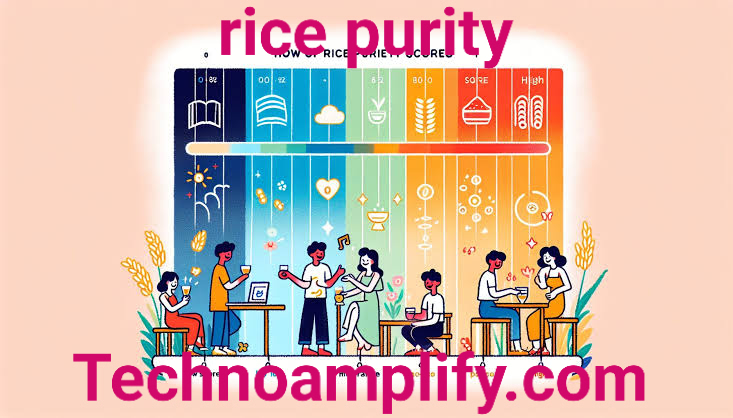Introduction
The Rice Purity Test is an online questionnaire that has been circulating the internet for years, often used to gauge a person’s level of innocence or experience in various life activities. The test itself consists of a series of questions that touch on a variety of topics, including relationships, drug use, and personal experiences, ranging from innocent to risqué. This article dives into the history, purpose, and cultural significance of the Rice Purity Test, along with its implications on social perceptions and mental well-being. In this comprehensive guide, we will explore everything you need to know about the test, from its origins to its contemporary relevance in the digital age.
What is the Rice Purity Test? A Deep Dive into Its Origins
The Rice Purity Test is a self-assessment tool that originated in the 1980s at Rice University in Houston, Texas. The test was originally designed as a fun and lighthearted way for university students to bond and engage with each other. The test is essentially a questionnaire that asks participants to assess whether they have engaged in a variety of behaviors, ranging from innocent childhood experiences to more adult situations involving substances, relationships, and social behaviors.

The Rice Purity Test has since become a widely recognized tool, not only among university students but also in online communities, with people from various backgrounds taking the test for fun, self-reflection, or curiosity. Although the test was initially created as a bonding activity for college students, it has since evolved into a viral phenomenon, spread across social media platforms and gaining popularity due to its simplicity and the curiosity it evokes. The test contains 100 questions, each of which is designed to measure how “pure” someone is based on their life experiences.
The term “purity” in the context of the Rice Purity Test refers to a person’s perceived innocence or level of exposure to adult experiences. The idea is that the more experiences a person has had that are typically associated with adulthood—such as romantic relationships, sexual activity, or alcohol and drug use—the lower their “purity” score will be. The Rice Purity Test has stirred debates regarding its emphasis on morality, personal experiences, and how it shapes individuals’ perceptions of themselves and others.
How the Rice Purity Test Works: Understanding Its Mechanics
The Rice Purity Test is composed of 100 questions that are designed to assess a wide variety of experiences. While the questions may seem innocuous at first, they quickly escalate in terms of the complexity and intimacy of the situations they describe. For example, early questions might ask about childhood experiences such as holding hands with someone, whereas later questions might inquire about sexual activities, drug use, or alcohol consumption.

Participants score points based on their responses. Each question is typically a yes or no answer, and each “yes” answer subtracts from a person’s purity score. The more “yes” answers you have, the lower your score, indicating that you have had more experiences deemed “less innocent” according to the test. A perfect score on the Rice Purity Test is 100, which implies that the person has not participated in any of the activities mentioned in the test. On the other hand, a lower score means the individual has engaged in more of the activities described.
The simplicity of the test—an easy-to-understand questionnaire—has made it appealing to many people. Social media platforms like Twitter, Instagram, and TikTok have been instrumental in popularizing the Rice Purity Test, with individuals frequently sharing their scores and comparing results with friends. The test has also sparked discussions about the expectations surrounding purity, sexual experiences, and morality.
The Popularity of the Rice Purity Test: Why People Take It
The Rice Purity Test has become a cultural phenomenon, particularly among young people, due to its accessibility and viral nature on social media platforms. There are several reasons why the test continues to captivate individuals, with its allure lying in its ability to generate curiosity and serve as a form of self-reflection. Let’s explore some of the key factors that contribute to the test’s popularity:

- Curiosity and Self-Reflection: Many people are drawn to the Rice Purity Test out of curiosity, especially regarding how their experiences compare to others. It serves as a way to measure personal growth or assess how “innocent” or “experienced” one is in relation to the norms of their social circle. The test provides an opportunity for individuals to reflect on their lives and assess the milestones they have reached.
- Social Bonding: The Rice Purity Test is often used as a bonding activity among friends or peers. It can serve as a conversation starter or icebreaker at parties, gatherings, or social events. By comparing scores, people can share their experiences, laugh about certain items on the list, and discuss their personal lives in a safe and lighthearted manner.
- Social Media Trends: Social media plays a crucial role in the popularity of the Rice Purity Test. Platforms like Twitter, Instagram, and TikTok allow people to share their test scores and engage with a larger online community. Hashtags and challenges related to the Rice Purity Test have gone viral, with users posting their results, creating memes, and even offering advice or opinions on what constitutes a “good” score.
- Entertainment and Humor: The test’s lighthearted approach to assessing purity can be a source of humor for those who take it. While some people take the test seriously, many find it amusing and enjoyable, as it often touches on experiences that are relatable, embarrassing, or funny. People may laugh at the questions or share stories that relate to certain items on the test, making it a fun activity rather than a serious evaluation of character or moral standing.
The Psychological and Cultural Impact of the Rice Purity Test
While the Rice Purity Test is often seen as a fun and lighthearted activity, it can have deeper psychological and cultural implications. The test indirectly reinforces societal norms and expectations about what it means to be “pure” or “innocent.” By linking a person’s experiences to their “purity,” the test can contribute to feelings of shame, guilt, or self-consciousness, particularly if someone has had experiences that deviate from the expected norms. In a world where societal pressures about sexuality, relationships, and personal conduct are pervasive, the Rice Purity Test may contribute to the stigmatization of certain behaviors. For example, those who score lower on the test may feel judged or isolated, even though the experiences listed in the questionnaire are common and widely shared. Conversely, those who score higher may feel a sense of superiority or pride in their “purity,” which can create an unhealthy comparison dynamic between individuals.

The Rice Purity Test also intersects with larger cultural conversations about sexual liberation, body autonomy, and personal choice. In many cultures, there is an implicit value placed on sexual purity, especially among younger individuals. The test’s questions often reinforce the idea that there is a “right” or “wrong” way to experience life, which may not align with modern values of acceptance and inclusivity.
Conclusion: The Lasting Legacy of the Rice Purity Test
In conclusion, the Rice Purity Test is an intriguing cultural artifact that continues to capture the attention of people worldwide. What started as a simple bonding activity among college students at Rice University has evolved into a viral phenomenon that is both playful and, at times, thought-provoking. The test offers insight into the various experiences that shape individuals’ lives, allowing people to reflect on their personal growth while also engaging in a bit of fun with friends and peers.
However, it is important to recognize the potential psychological and cultural impacts of the Rice Purity Test. While it is a harmless and entertaining activity for many, it can also perpetuate unrealistic expectations and create unnecessary comparisons. It’s essential to remember that the test does not define a person’s worth or character—it is simply a snapshot of life experiences, some of which may be more meaningful or significant than others.
Ultimately, the Rice Purity Test highlights the complexity of personal experience and the evolving nature of cultural norms. Whether taken seriously or as a joke, the test encourages individuals to reflect on their lives and their unique paths, all while fostering connection and discussion in a world that is increasingly interconnected through digital platforms.
Frequently Asked Questions (FAQs)
- Is the Rice Purity Test reliable in assessing someone’s innocence? No, the Rice Purity Test is not a reliable measure of someone’s innocence. It is merely a fun and subjective questionnaire that asks participants about their life experiences. People’s values and experiences are much more complex than what a simple test can evaluate.
- Can the Rice Purity Test be harmful to mental health? In some cases, yes. The test may contribute to feelings of shame or insecurity for individuals who feel their experiences do not align with the “pure” ideal. It’s essential to approach the test with a sense of humor and self-awareness, understanding that it is not a reflection of a person’s worth.
- Why is the Rice Purity Test so popular? The test’s popularity stems from its simple and fun nature, as well as its ability to foster social bonding. Social media also plays a significant role in its viral spread, with users sharing their results and engaging in discussions about purity and experiences.
- Should I take the Rice Purity Test seriously? While the test can be fun and offer a moment of self-reflection, it should not be taken too seriously. It is not a definitive assessment of who you are or your moral standing. People are unique and complex, and a questionnaire cannot fully capture that complexity.
- How can I share my Rice Purity Test results with friends? Many people share their results on social media platforms like Twitter, Instagram, or Facebook. You can also take the test in a group setting, comparing scores and discussing the various experiences mentioned in the
Also Read This : Understanding Rice Purity Test: A Comprehensive Guide to Its Meaning, Popularity, and Impact


